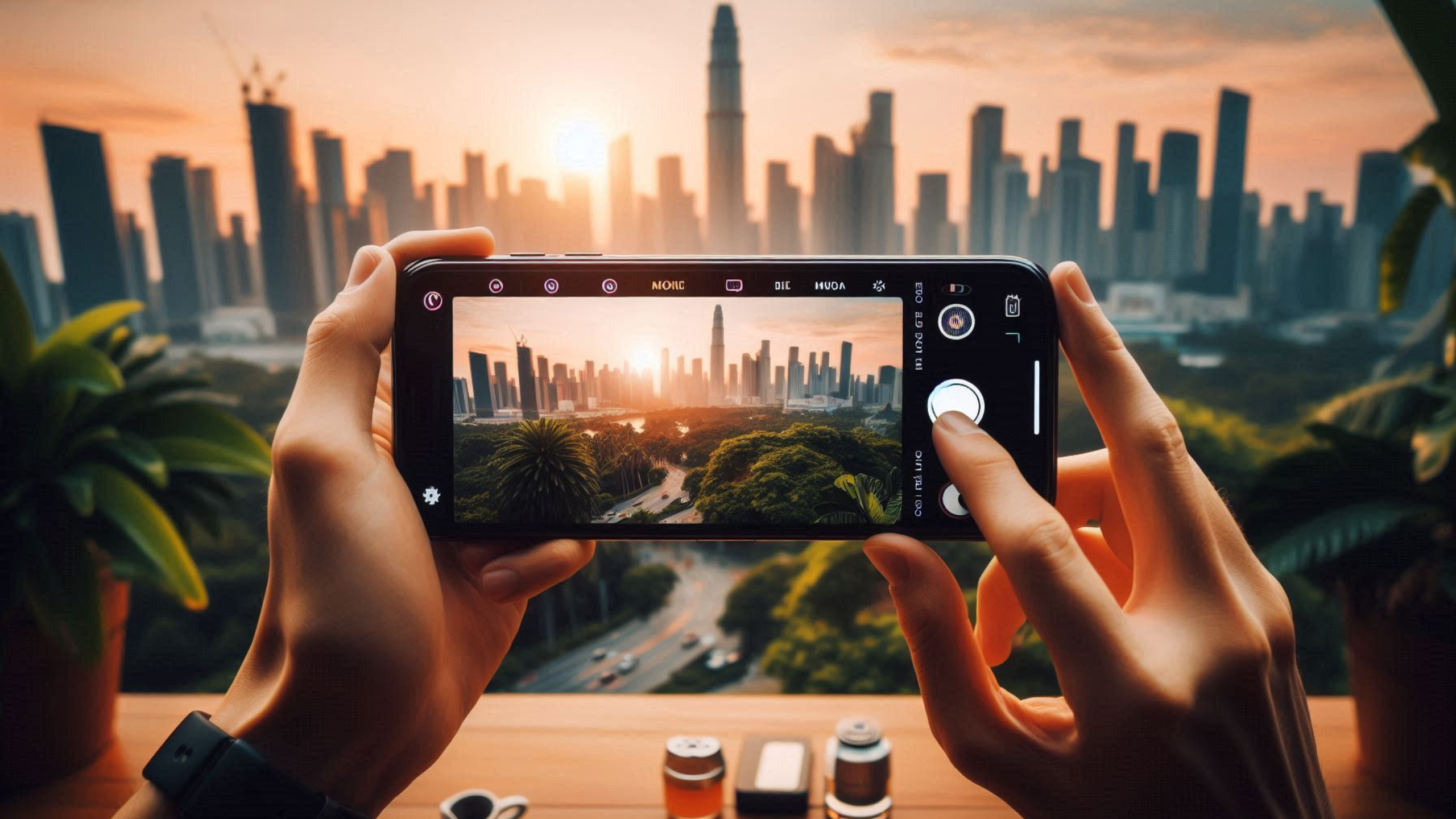I. Understanding Your iPhone Camera Features
A. Overview of the iPhone Camera Hardware
Your iPhone is equipped with some impressive camera hardware. It typically includes Wide, Ultra Wide, and Telephoto lenses. Each of these lenses has unique capabilities that can significantly impact your video quality. The sensors in these cameras are designed to capture high-resolution images and videos, ensuring that every detail is crisp and clear. The quality of the lens also plays a crucial role in video recording, as it affects the sharpness and clarity of your footage. Mastering the iPhone camera settings for best quality video will help you make the most of these features.
B. Exploring Video Resolution Options
When it comes to video resolution, your iPhone offers several options, including 720p, 1080p, and 4K. Higher resolutions like 4K provide more detail and clarity, but they also take up more storage space. Frame rates are another important factor. You can choose between 24fps, 30fps, and 60fps. Higher frame rates like 60fps are great for capturing smooth motion, while 24fps gives a more cinematic feel. Choosing the right resolution and frame rate depends on what you’re shooting and how you plan to use the video.
C. Frame Rates and Their Effects on Video
Frame rates determine how smooth your video looks. Higher frame rates (like 60fps) are ideal for capturing fast-moving subjects, while lower frame rates (like 24fps) are perfect for a more cinematic look. Your iPhone also offers slow-motion and time-lapse settings, which can add creative effects to your videos. Keep in mind that higher frame rates and resolutions will result in larger file sizes, which can impact your storage and editing process.
II. Essential Video Settings to Adjust
A. Changing Video Resolution and Frame Rate
Adjusting your video resolution and frame rate is simple. Go to your iPhone’s Settings, tap on Camera, and then select Record Video. You can select your preferred resolution and frame rate here. Remember, higher settings will take up more storage, so balance quality with your device’s capabilities.
B. Enabling HDR Video
HDR (High Dynamic Range) video enhances the contrast and color of your videos, making them look more vibrant and realistic. To enable HDR, go to Settings, tap on Camera, and toggle on HDR Video. HDR is especially useful in scenes with a lot of contrast, like sunsets or brightly lit landscapes.
C. Managing Stabilization Features
Your iPhone offers both optical and digital stabilization to help reduce camera shake and produce smoother videos. Optical stabilization uses the camera’s hardware to stabilize the image, while digital stabilization uses software. To adjust these settings, go to Settings, tap on Camera, and look for the stabilization options. Stabilization is particularly useful when shooting handheld or in motion.
III. Lighting and Environment Considerations
A. Best Practices for Natural Lighting
Natural lighting can make a huge difference in your video quality. The time of day affects the lighting, with early morning and late afternoon providing the best natural light. When shooting in direct sunlight, try to avoid harsh shadows by positioning your subject correctly. Adjusting the exposure on your iPhone can also help achieve optimal lighting.
B. Using External Lighting Sources
Sometimes, natural light isn’t enough, and that’s where external lighting comes in. Portable lights can be very effective in enhancing your video quality. Use them to fill in shadows or add a creative touch to your scenes. Balancing natural and artificial light can create a more professional look.
C. Choosing the Right Location
The location you choose for shooting can greatly affect your video quality. Avoid noisy and distracting backgrounds that can take attention away from your subject. Instead, opt for locations that enhance the aesthetics of your video. A clean, well-lit background can make a big difference.
By mastering these iPhone camera settings for best quality video, you can take your video recording skills to the next level. Happy shooting! 📸🎥
IV. Audio Settings and Considerations
A. Understanding Built-In Microphone Capabilities
Your iPhone comes with impressive built-in microphones that can capture high-quality audio. However, ambient noise can sometimes interfere with your recordings. To optimize your microphone sensitivity, try to record in quieter environments and use the built-in noise reduction features. This will help ensure that your audio is clear and free from unwanted background noise.
B. Using External Microphones
For even better audio quality, consider using external microphones. There are various types of external microphones compatible with iPhones, such as lavalier mics, shotgun mics, and USB mics. These can significantly enhance your audio quality by providing clearer and more focused sound. To connect and configure these devices, simply plug them into your iPhone’s lightning port or use an adapter if necessary. Make sure to test and adjust the settings to get the best results.
C. Monitoring and Enhancing Audio
Capturing high-quality audio requires some techniques and tools. Use apps like GarageBand or Filmic Pro to monitor audio levels during recording. These apps can help you ensure that your audio is balanced and free from distortion. After recording, you can use editing software to enhance your audio further. Adjusting levels, reducing noise, and adding effects can make a big difference in the final quality of your video.
V. Editing and Exporting Video for Quality
A. Best Editing Apps for iPhone Videos
Editing your videos on your iPhone is a breeze with the right apps. Popular video editing applications like iMovie, LumaFusion, and Adobe Premiere Rush offer a range of features to enhance your videos. Look for key features such as multi-track editing, color correction, and audio enhancements. Beginners might find iMovie user-friendly, while advanced users can explore the more robust features of LumaFusion.
B. Exporting Settings for Optimal Quality
When it comes to exporting your videos, you want to ensure that you don’t lose any quality. Follow these steps to export your video files without quality loss: choose the highest resolution and bitrate available, and avoid excessive compression. Understanding compression and its impact on video quality is crucial. For various platforms, recommended formats include MP4 for YouTube and MOV for higher quality needs.
C. Sharing Videos Without Losing Quality
Sharing your videos while preserving their quality can be tricky. For social media, upload directly from your editing app to maintain the best quality. When sharing via email or cloud uploads, use services that support high-resolution files, like Google Drive or Dropbox. Adjust your settings based on the platform to ensure your videos look their best.
Conclusion
Mastering iPhone camera settings for the best quality video involves understanding and optimizing both your video and audio settings. By continually practicing and experimenting with different settings, you can achieve professional-quality videos right from your iPhone. Happy filming!
FAQs
What are the best settings for shooting videos indoors?
For indoor shooting, use a higher ISO setting to compensate for lower light levels and adjust the white balance to match your lighting conditions.
How can I improve audio quality on my iPhone videos?
Use an external microphone and record in a quiet environment. Apps like GarageBand can help monitor and adjust audio levels during recording.
What is the best resolution for YouTube videos filmed with an iPhone?
4K resolution is ideal for YouTube videos as it provides the highest quality, but 1080


